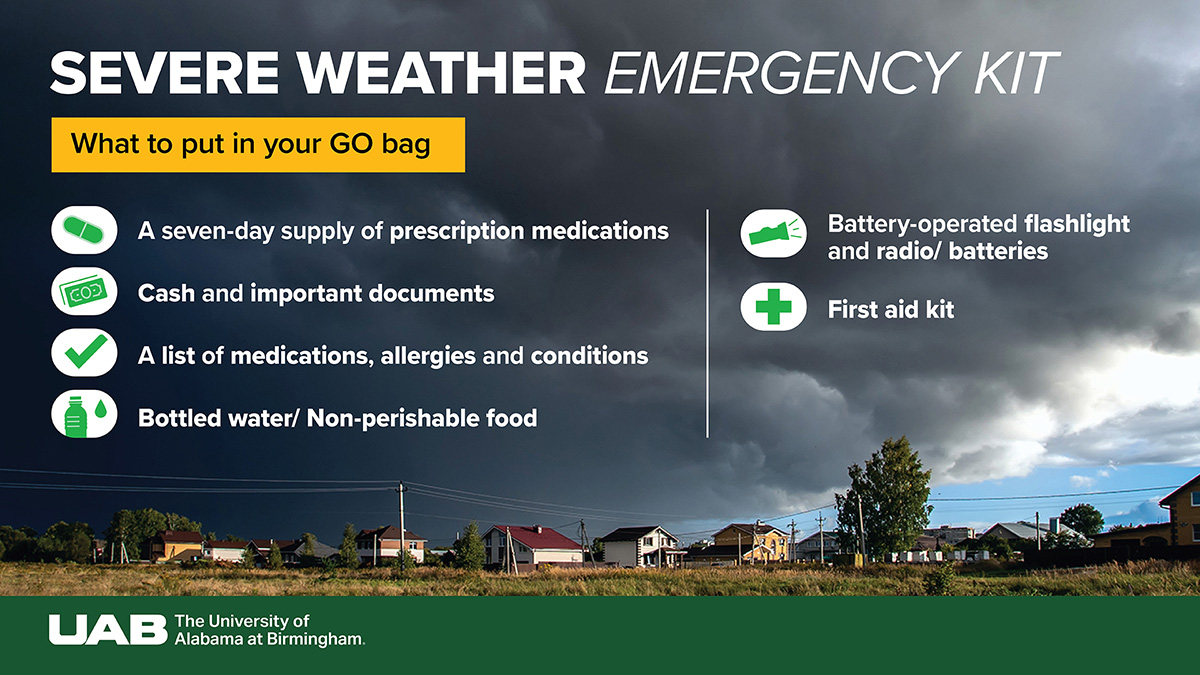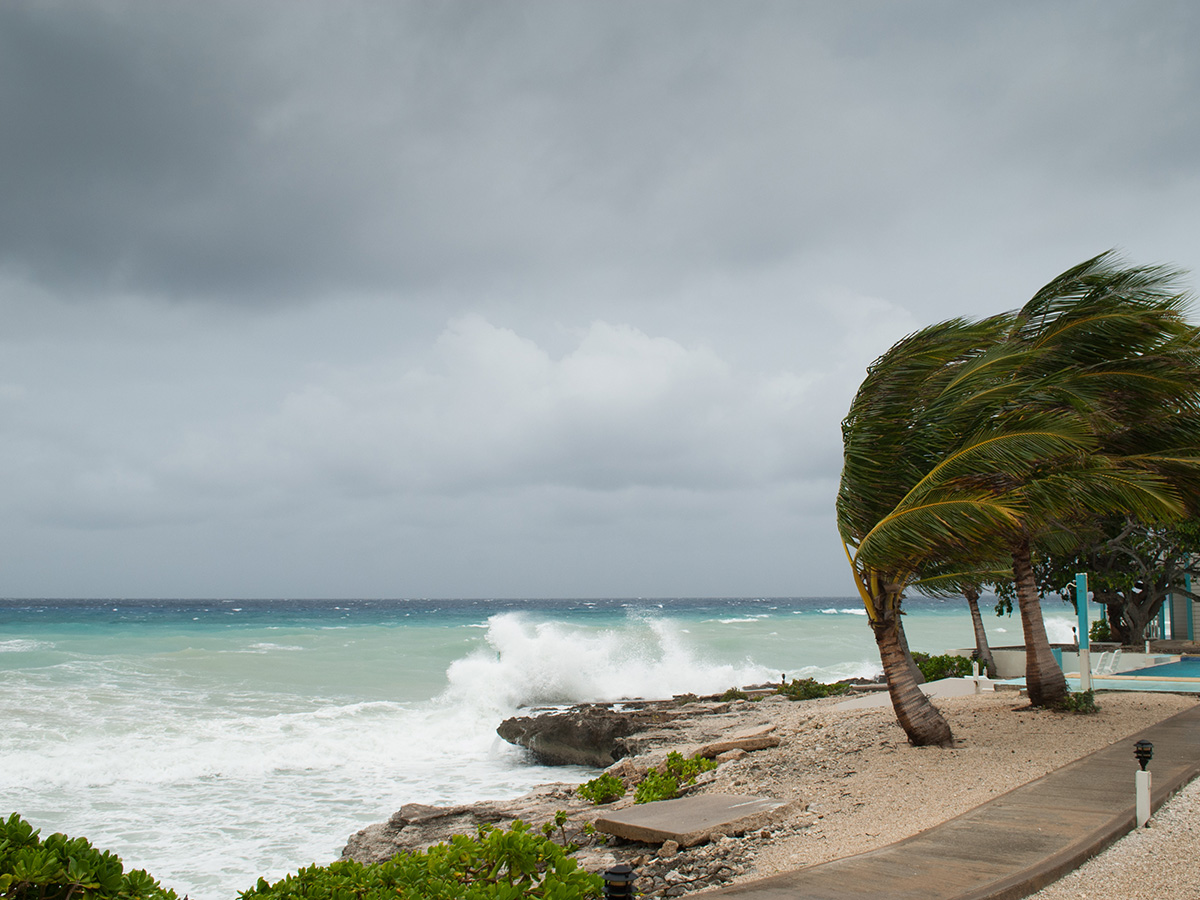
Experts at the University of Alabama at Birmingham encourage everyone to prepare early for severe weather, including hurricane season. From creating an evacuation plan to packing a “go bag,” early preparation can make a lifesaving difference when a storm strikes.
Dag Shapshak, M.D., associate professor in the Department of Emergency Medicine, and Eddie Coar, director of Emergency Management, at UAB explain how to prepare for hurricane season.
“The most important step is to plan ahead,” Shapshak said. “That means knowing your evacuation route, stocking your emergency kit and making sure your family has a clear evacuation plan.”
Tropical storm versus hurricane
Knowing the difference between a tropical storm and a hurricane is crucial when creating a targeted and effective emergency plan.
“Both tropical storms and hurricanes are types of tropical cyclones,” Coar said. “The biggest difference between a tropical storm and a hurricane lies in their maximum sustained wind speed.”
A storm is classified as a tropical storm when its sustained surface winds range from 39 to 73 miles per hour. While tropical storms can cause flooding, power outages and property damage, they typically do not pose the same level of threat as hurricanes.
 Hurricanes are categorized using the Saffir-Simpson scale, ranging from Category 1, 74-95 mph winds, to Category 5, 157 mph winds or higherOnce sustained winds reach 74 mph, the storm is considered a hurricane. Hurricanes are categorized using the Saffir-Simpson scale, ranging from Category 1, 74-95 mph winds, to Category 5, 157 mph winds or higher, based on wind speed and potential for destruction.
Hurricanes are categorized using the Saffir-Simpson scale, ranging from Category 1, 74-95 mph winds, to Category 5, 157 mph winds or higherOnce sustained winds reach 74 mph, the storm is considered a hurricane. Hurricanes are categorized using the Saffir-Simpson scale, ranging from Category 1, 74-95 mph winds, to Category 5, 157 mph winds or higher, based on wind speed and potential for destruction.
Planning ahead
Creating an emergency plan can help ensure everyone’s safety. Coar suggests considering the following elements when creating an emergency plan:
Evacuation
- Know your zone: Check whether you’re in a coastal or flood evacuation area.
- Plan routes: Identify main and backup evacuation routes.
- Choose a destination: Decide on a friend’s home, hotel or shelter in advance.
Communication
- List contacts: Write down phone numbers for family, emergency services and utilities.
- Stay connected: Choose an out-of-town contact everyone can reach if separated.
- Use backup tools: Keep an NOAA weather radio, battery-powered or hand-crank radio, and walkie-talkies. Texting may work better than calling during outages.
Get everyone involved
When preparing for an evacuation, consider the needs of everyone in the household.
Involve children in the planning process so they understand what to expect, and pack comfort items such as favorite toys, blankets or books to help reduce stress. For older adults and people with disabilities, plan for mobility challenges, medical devices and accessibility needs.
Learn more about how to prepare your home for severe weather at uab.edu/news.
Ensure prescriptions are filled and assistive equipment is ready and easy to transport. Include pets in the evacuation plan by packing food, water, medications, a leash or carrier, and vaccination records. Identify pet-friendly hotels, shelters, or friends and relatives who can assist.
Planning for injuries
Shapshak says it is important to prepare for medical needs before the storm hits. Every household should have at least a seven-day supply of prescription medications in labeled containers. Keep a written list of medications, allergies and health conditions, along with copies of medical records, in a waterproof bag or on a flash drive.
People with chronic conditions such as diabetes or heart disease should speak with their doctor ahead of time. They may need help planning how to manage their care during a power outage or evacuation. That includes having extra supplies and backup batteries for essential medical devices.
In the aftermath of a storm, injuries are common, especially during cleanup. Shapshak warned that emergency rooms often see cuts, eye injuries and falls caused by tools like chainsaws or debris and carbon monoxide poisoning.
“Wear protective clothing and sturdy shoes when cleaning up,” Shapshak said. “And never use a generator indoors. Carbon monoxide is odorless and deadly.”